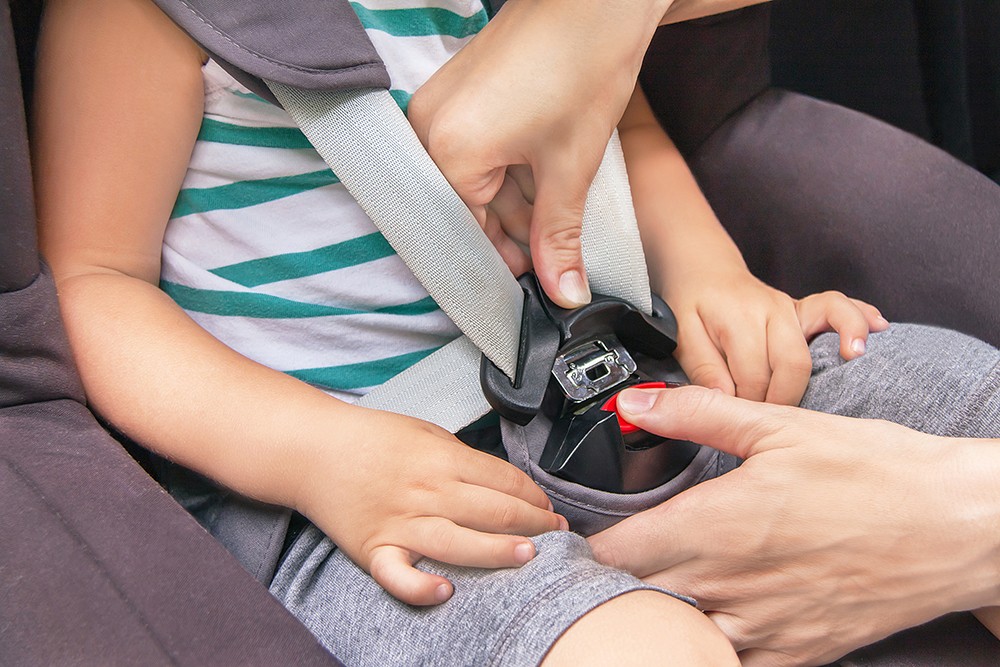National Campaign Targets Rise In Vehicle Accidents Involving Children

Child Passenger Safety Week begins September 18 with a focus on preventing fatalities for children in auto accidents.
The annual campaign also concludes with National Seat Check Saturday, Sept. 24.
According to statistics from the National Highway Traffic Safety Administration, an average of two children under 13 were killed and some 374 injured every day in 2019 while riding in cars, SUVs, pickups, and vans.
The NHTSA report revealed 38 percent of unrestrained children died in traffic crashes in 2019. The 608 total represents a five percent increase over 2018. In the pandemic year of 2020, two children under 13 were killed every day while riding in vehicles and another 278 were injured.
NHTSA works with local communities every year to sponsor Child Passenger Safety Week. National Seat Check Saturday gives parents and caregivers free instruction on correct installation and use of the appropriate car seats.
Technicians help determine if children are fitted with the right seats for their ages and sizes. They also explain how parents can register to receive manufacturer notifications about recalls.
Motor vehicle crashes are a leading cause of death for children, and the latest research from NHTSA shows that 46% of car seats are misused. About half of car seats are installed incorrectly and leave children vulnerable to injury in a crash, NHTSA stated.
Other sobering statistics from NHTSA:
- From 2016 to 2020, there were 1,721 “tweens” (8 to 14 years old) killed in passenger vehicles.
- In 2020, more than a third of children 12 and younger who died in crashes were not buckled.
- Children ages 8- to 12-year-old age group had the highest number of fatalities (216) among children in passenger vehicles during 2020.
Dispelling Myths and Common Mistakes
- A bigger vehicle doesn’t mean your child can ride unbuckled. In 2020, 53% of the children killed while riding in light trucks were unrestrained, followed closely by SUVs (46%), passenger cars (34%), and vans (34%).
- Children are safest when correctly secured in the right car seats or booster seats for their ages and sizes, regardless of vehicle type.
- One of the most common mistakes involves moving children to the next seat or position too soon. Keep children in rear-facing position as long as possible, up to the top height and weight allowed by their particular seats.
- Once children outgrow a rear-facing car seat, they are ready to travel in a forward-facing car seat with a harness and tether. The tether is critical for installing a forward-facing car seat and keeps the seat from moving forward in a crash.
- When they outgrow forward-facing car seats, children must be buckled in a booster seat until tall enough to fit in an adult seat belt properly.
- Do not relent if children ask to move from the booster seat since it makes them feel older. If your child is ready to use a seat belt, make sure it fits correctly and they are buckled properly. The safest place for children under 13 is in the rear seat.
Resources
NHTSA encourages everyone who drives child passengers to check out its list of free, online resources at:
-
-Car Seat Types: Determine whether your child fits best in a rear-facing car seat, forward-facing car seat, booster seat, or seat belt.
-
Car Seat Recommendations: Review NHTSA’s recommendations for the best car seat for your child’s age and size.
-
Find and Compare: Find and compare car seats with NHTSA’s handy car seat finder, which also searches specific brands.
Find a technician in your community:
Install and Inspect Child Safety Seats
The site allows you to filter results to show Spanish-speaking technicians, virtual appointments and Child Passenger Safety Week events.
For more information on events and child car seat safety, go to: